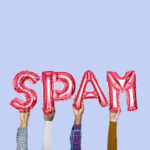Dos and Don’ts of Email Marketing
Written by: Melissa on October 12, 2020

“Keep in touch.” This common phrase is easy to say, but not always easy to do. Successful travel advisors know that staying in touch with their client base is essential, especially for those that travel less frequently. Email campaigns can be an effective way to maintain contact with potential customers, ensuring they remember you when it’s time to plan their next vacation. We’ve put together this list of dos and don’ts of email marketing to help you get started.

DO have a regular schedule for your email campaigns.
Consistent content is one of the most important keys to success. Create a realistic mailing schedule, write it down, and stick to it. Outlining content ideas or themes a few months at a time makes it easier to complete the task when the time comes. KHM Travel Agents can take advantage of the professionally crafted marketing and newsletter templates included with membership.
DON’T overwhelm your recipients with messages.
One of the main causes of inbox fatigue is receiving too many emails. (Content relevancy is also important, which we’ll get to in a minute.) It can be tricky to strike a balance between maintaining contact with your customers and annoying them with excessive messages, and sometimes it is a matter of trial and error to find that sweet spot. More frequent emails may be appropriate for a short-term campaign to follow up after an event or tradeshow, while a general newsletter could be sent monthly to your entire subscriber list.
DO keep your content fun and fresh.
The second main cause of inbox fatigue is irrelevant content. Recipients are probably already receiving an avalanche of promotional “buy this now” messages, which are easy to unsubscribe from once the need for that product has passed. Your content will stand out if it sounds more like a personal message to the recipient, instead of a canned email to a list of contacts. Effective messages appeal to the senses and emotions of your reader, tell a story, and address a current need or concern. As a travel advisor, YOU are the brand, so use this opportunity to share a bit of your personality with your potential clients.

DON’T forget to include a call to action.
Even though you want your message to be fun and informative, at the end of the day, it’s still about marketing your business. Use a call to action (CTA) to let your readers know what they can do with the information they’ve received. It could be an invitation to contact you for a consultation, a request for referrals, or a reminder to follow your business on social media.
DO test your content before you send it.
Typos and major grammatical errors will detract from your professional image, so carefully edit each email. If possible, have someone else review the message and offer feedback. Before you send the final version to your entire mailing list, always send a test copy to yourself. Open the email on both a mobile and desktop device to make sure the formatting and links work properly.
DON’T purchase lists of email addresses.
Buying a list of email addresses, even one where subscribers supposedly opt in to receive messages, is not recommended. It can lead to numerous problems, including a negative impression of your business, being penalized by your email provider, and potentially violating laws protecting personal data. Instead of purchasing email addresses, focus on growing a quality list composed of your clients, referrals, networking contacts, and other personal connections. Speaking of growing your list …
DO make it easy to subscribe to your emails.
Give your customers ample opportunities to subscribe to your updates by including sign-up links in multiples places, such as your website, social media accounts, and email signature. Share a preview of your newsletter content on social media and then invite your followers to subscribe to future editions. Keep your sign-up form simple and avoid asking for too much personal information.

DO provide an easy way to unsubscribe.
Anti-spam laws in the United States require all commercial emails to include a clear, easy-to-use way for recipients to opt out of receiving future messages. Many email campaign services—such as MailChimp or Constant Contact—will automatically include an unsubscribe link in each message. Any requests to unsubscribe must be processed promptly. The CAN-SPAM Act outlines several other requirements for emails, so be sure to review this important information.
DON’T get upset when people choose to unsubscribe.
Even if you are using a carefully constructed list of people who initially requested to receive your messages, you will inevitably receive requests to unsubscribe to your newsletter or campaign. Try not to take these requests personally. Some people are simply responding to a general overload of their inbox. If you notice a large increase in unsubscribe requests, however, it may be time to review your email campaign content and frequency.
Want to learn more about how the email marketing tools provided by KHM Travel Group can benefit your travel business? Contact us at 1-888-611-1220 or fill out the form on the right to receive more information.
